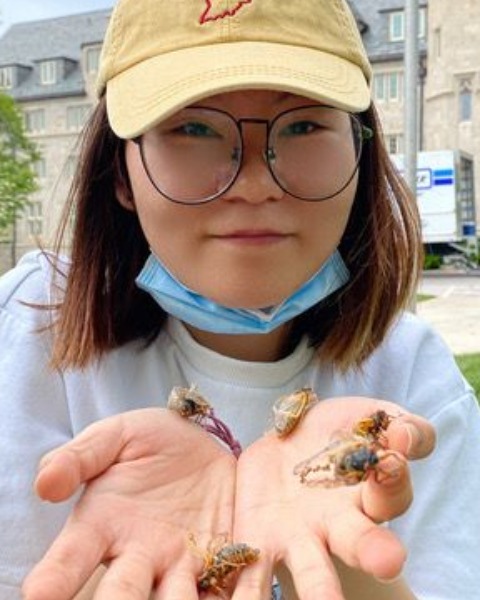Student 10-Minute Presentation
Systematics, Evolution, and Biodiversity
Student
Student Competition
The evolutionary trajectory of Metarhizium robertsii endophytic capability and entomopathogenicity

Huiyu Sheng (she/her/hers)
PhD student
University of Maryland College Park
College Park, Maryland
Raymond St. Leger
Distinguished University Professor
University of Maryland
College Park, Maryland
Presenting Author(s)
Co-Author(s)
Strains of Metarhizium robertsii (M. robertsii) differ in their ecological interactions as saprophytes, insect pathogens, and plant symbionts. To identify the underlying intraspecific phenotypic differences, we compared eight sequenced M. robertsii strains that represent a range of contrasting abilities for colonization of insects and plants. Recently diverged strains killed insects quickly and germinated rapidly on insect cuticles, plant roots, and a wide variety of nitrogen and carbon sources, indicating that endophytic capability, insect pathogenicity, and metabolic capacity are coupled. Most produced toxins and proliferated within insect’s post-mortem, which delayed their emergence from cadavers and sporulation. In contrast, the early diverged strains were non-toxigenic slow insect killers that germinated slowly on the cuticles, roots and most nutrient sources. However, they proliferate abundantly premortem to emerge rapidly and sporulate profusely post-mortem. Using mutant Drosophila melanogaster lines, we found that the magnitude of the immune response was unrelated to fungal proliferation in the hemocoel, but in the absence of the Toll pathway activator Persephone, proliferation increased and between-strain differences in within-host proliferation and lethality were reduced. Therefore, strain differences result from a combination of pathogen attributes such as toxin production and host immune-mediated resistance. This study aimed to use M. robertsii as a tractable model to elucidate the evolutionary trajectory of insect-fungus-plant interactions and identify the phenotypic requirements for effective biocontrol agents in the field, ultimately enhancing the optimization of application strategies.

.png)

